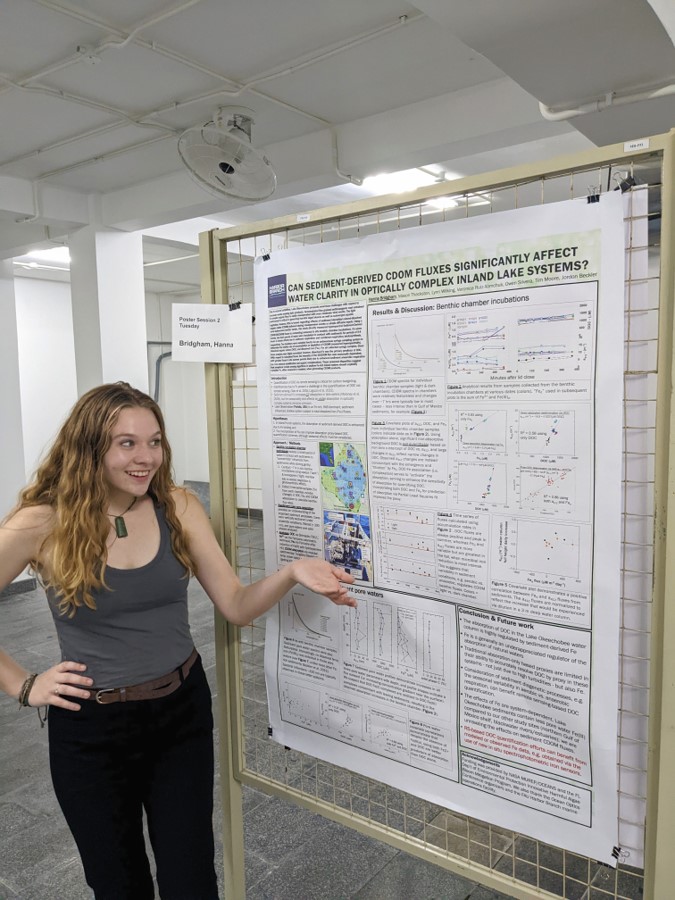
Hanna Bridgham, an Integrative Biology- Marine Science and Oceanography (IBMO) PhD student, recently attended the 2022 Ocean Optics Conference in Vietnam. Hanna works in the Geochemistry and Geochemical Sensing Laboratory of Dr. Jordon Beckler at the FAU Harbor Branch Oceanographic Institute.
Poster Title: Can sediment-derived CDOM fluxes significantly affect water clarity in optically complex inland lake systems?
Poster Abstract: Due to extreme turbidities, Lake Okeechobee presents enormous challenges with respect to accurate remote sensing data products. Accumulated fine grained anthropogenic mud entrained in complex organic flocs is easily resuspended with even moderate wind events. The light environment is critical in governing harmful algal blooms as well as submerged aquatic vegetation. However, little is known regarding effects of sediment interstitial colored-dissolved organic matter (CDOM) delivered during resuspension events or simple diffusive inputs. Using a novel autonomous benthic lander, this study directly measured hyperspectral sediment-derived CDOM (SDCDOM) fluxes by conducting seasonal in situ benthic chamber incubations. On seven events, two short parcels of water were incubated in contact with sediments for periods of 6-8 hours to isolate effects due to sediment respiration and combined respiration/photosynthesis, respectively. The chambers were sampled hourly via an autonomous syringe sampling system to determine the relative rate of accumulation or depletion of CDOM (measured hyperspectrally), dissolved organic carbon (DOC), and dissolved iron (Fed). For all collected syringe samples, these three analytes were highly correlated; however, dissolved iron was the primary predictor of DOC. With respect to calculated fluxes, the intensity of the SDCDOM flux was seasonally dependent, with greater fluxes in warm periods likely due to enhanced sediment anaerobic respiration (i.e. iron mineral solubilization and organic complexation). These seasonal disparities suggest that empirical remote sensing algorithms in Fe-rich inland waters should explicitly consider iron, either measured or modeled, when generating CDOM products.